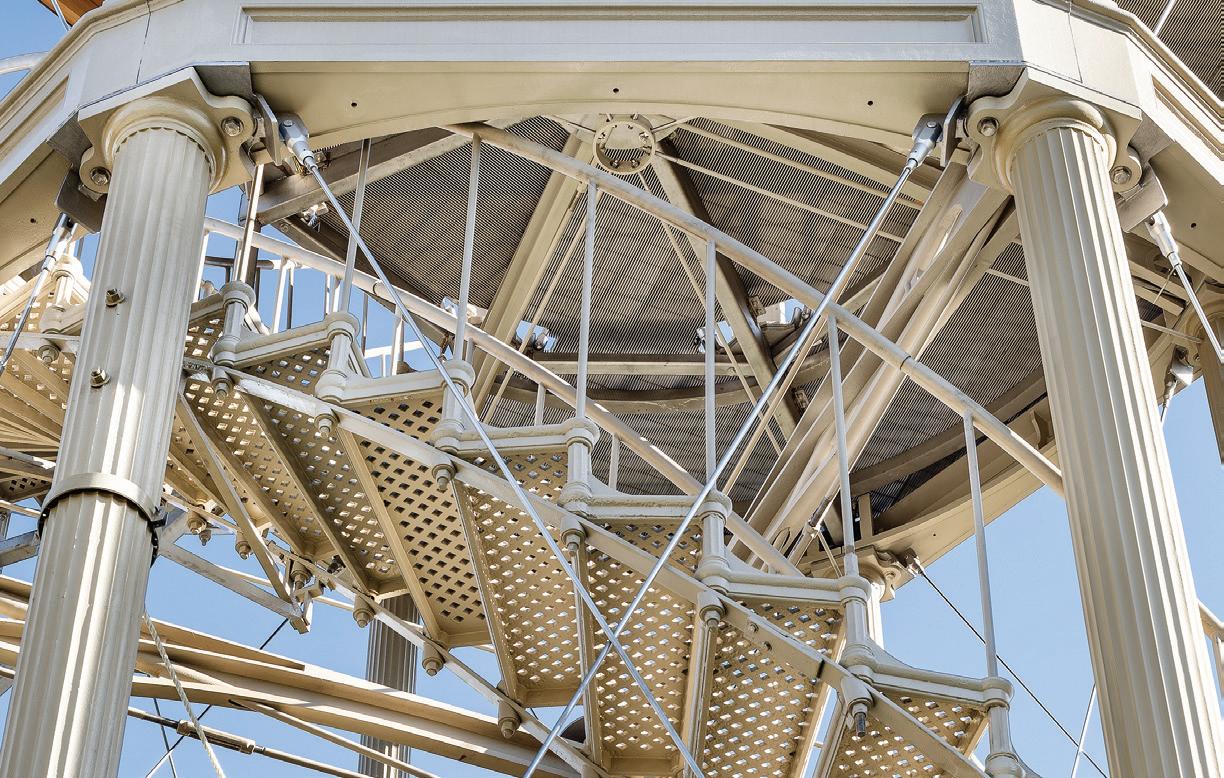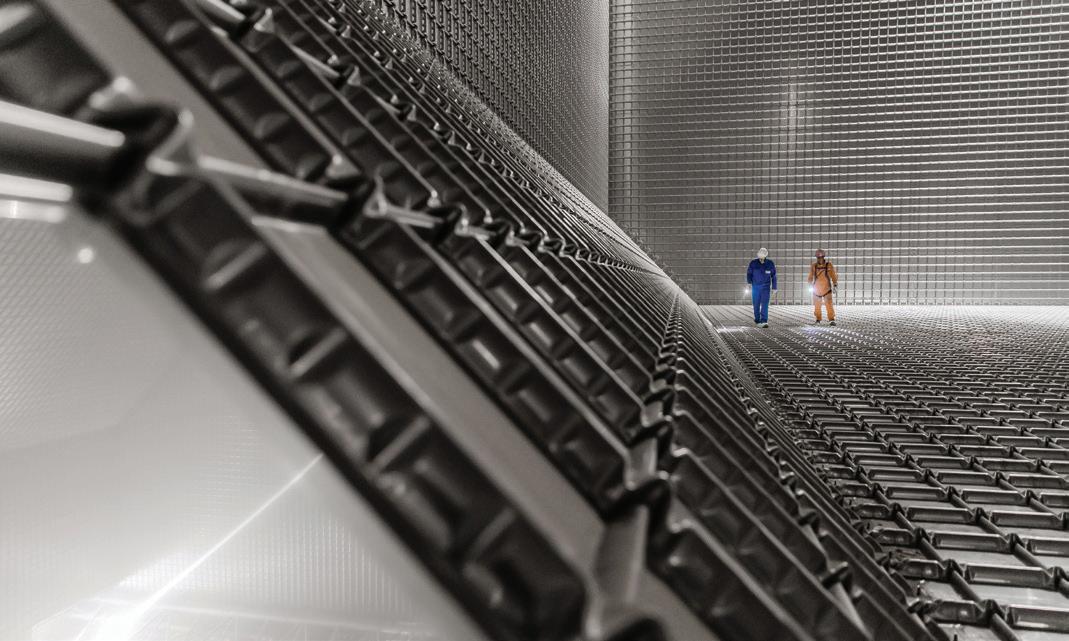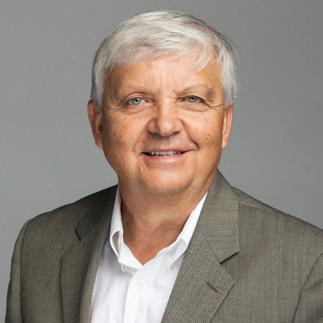
4 minute read
Nickel notables
CONTENTS
02 Case study no. 20 Tintagel bridge 03 Editorial At the extremes 04 Nickel notables 06 ‘Million-mile’ battery Single crystal Ni-containing cathodes 08 Subzero temperatures In control with stainless steel 11 Extreme heat Nickel can take it 12 At the extremes Nickel alloys in space 14 Technical Q&A Hypodermic needles and nickel allergy 15 Steve Barnett 1954-2020 15 New publication Seawater cooling systems 15 UNS details 16 Bracing for the future Harlem Fire Watchtower restored
Nickel magazine is published by Nickel Institute
www.nickelinstitute.org
Dr. Hudson Bates, President Clare Richardson, Editor
communications@nickelinstitute.org
Contributors: Parvin Adeli, Gary Coates, Catherine Houska, Richard Matheson, Geir Moe, Kim Oakes, Ken Rudisuela, Frank Smith, Benoît Van Hecke, Odette Ziezold
Design: Constructive Communications
Material has been prepared for the general information of the reader and should not be used or relied upon for speci c applications without rst securing competent advice. While the material is believed to be technically correct, Nickel Institute, its members, sta and consultants do not represent or warrant its suitability for any general or speci c use and assume no liability or responsibility of any kind in connection with the information herein.
ISSN 0829-8351
Printed in Canada on recycled paper by Hayes Print Group
Cover: © International Polar Foundation - René Robert Stock image credits: pg. 6 iStock©Jae Young Ju

NICKEL NOTABLES

Mesmerising sound

British gong maker Philip James (Turiya sounds) uses nickel silver to create all his instruments. “The sound of a gong is quite unlike anything else,” explains Philip. “it helps one to reach a deeply meditative, transcended state of consciousness”. Nickel silver is an ideal material for fabricating gongs and has unsurpassed sound resonating capabilities. “The fi rst time I heard a gong being played, it took me to such a magical place,” says Philip. “I have been fascinated by them ever since.” UK’s Columbia Metals supplied sheets from 0.8 mm to 1.6 mm thick of NS104 (UNS C75700) which contain 12% nickel and have corrosion and tarnish resistance to levels well above normal brasses. “When it comes to making gongs, there really is nothing quite like nickel silver” says Philip. “It is amazing.”

Productive plant magnetism
The distinctive neon blue-green colour sap is a sign of nickel, up to 25%, in rare plants that love high concentrations of metal, with roots that draw it in like a magnet. To date, about 700 hyperaccumulators have been discovered around the world, and field studies have examined their ability to flourish in metal-rich soils. These plants can be phytomined – harvesting the sap and processing it to extract pure nickel or to make nickel chemicals that are suitable for uses like electroplating. While conventional mining operations are far more economically viable to extract metals from high-grade deposits, phytomining’s niche would be low-grade surface deposits found in ultramafic soils in more tropical regions like Cuba, New Caledonia, Australia, and Malaysia. Once phytomined, it has been noted that the soil is substantially more fertile and ready for the production of food crops.


Pineapple leaf upcycling
It’s a fresh idea that will turn tons of pineapple waste annually into a multi-purpose, ultra-light, low cost aerogel. Researchers from the National University of Singapore (NUS) have found a method of using pineapple leaf fibres coated with a chemical called diethylenetriamine (DETA), to create eco-aerogels that can remove four times more nickel ions from industrial wastewater compared to conventional methods. Associate Professor Duong Hai-Minh, who leads the team says, “Due to its high porosity, eco-aerogels are highly efficient in removing metal ions, even in dilute solutions where the amount of metal ions is low. The treatment process is simple, cheaper and does not generate secondary waste. Eco-aerogels can also easily desorb the metal ions and be reused several times, further reducing costs. Having developed several other useful applications, this four-year project has resulted in “a big step towards sustainable agriculture and waste management.”
On the nose

Know the feeling of an ill-fitting COVID-mask steaming up your glasses? Nickel is helping to remedy this while providing invisible comfort. Germany’s cwTec is using a fine nickelcontaining stainless steel strip from Norder Band AG to keep masks fitting snugly on medical professionals and frontline workers who wear glasses and need to see clearly at all times. In addition to its ease of sourcing and the absence of any allergic reactions, the stainless steel strip can be recycled along with the other materials the mask is made of. Quite an achievement for barely one gram of nickelcontaining stainless steel.







